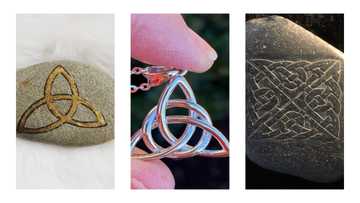Countries with red, white, and green flags listed: Design and symbol explained
Each flag conveys a story about the nation's history and culture. While Bulgaria's and Hungary's flags are almost identical with red, white, and green colours, some flags have exceptionally gorgeous and distinct designs. What are the countries with red, white, and green flags?

Source: Getty Images
TABLE OF CONTENTS
Flags that primarily contain red, white, and green hold a special place among national symbols. While the symbolism varies by country, these colours frequently convey strong meanings that reflect the beliefs, past events, and objectives of the countries that proudly display them.
Countries with red, white, and green flags
National flag colours and designs are typically not chosen randomly but based on the country's history, culture, or religion. Many flags share the exact origin, and these "flag families" are frequently related by common customs and location.
1. Belarus

Source: Getty Images
The Republic of Belarus is a landlocked nation in Eastern Europe. The country's is a rectangular fabric with two horizontal stripes. A red top stripe is two-thirds of the width, and a green bottom stripe is one-third of the width. A vertical Belarusian decorative pattern in red and white is put against the flagstaff.
Symbolism
The colour red represents power, courage, honour, and energy. Green represents health, hope, rejuvenation, youth, creation, diligence and natural harmony. White represents innocence, purity, wisdom, accord, and knowledge.
The ornate pattern represents the nation's centuries-old culture and spiritual wealth. The pattern on the National Flag represents bread, harvest, and procreation; it symbolises diligence and prowess, which are the foundations of people's good fortune.
2. Bulgaria

Source: Getty Images
Bulgaria is a Balkan nation with a diversified landscape, a mountainous interior, a Black Sea coastline, and rivers such as the Danube. What flag is similar to Hungary? Bulgaria's flag is a tricolour, with three equal-sized horizontal bars of white, green, and red.
Symbolism
The white on the flag represents love, peace, and freedom, while the green highlights Bulgaria's agricultural prosperity. The colour red represents the independence battle and military bravery.
3. Algeria
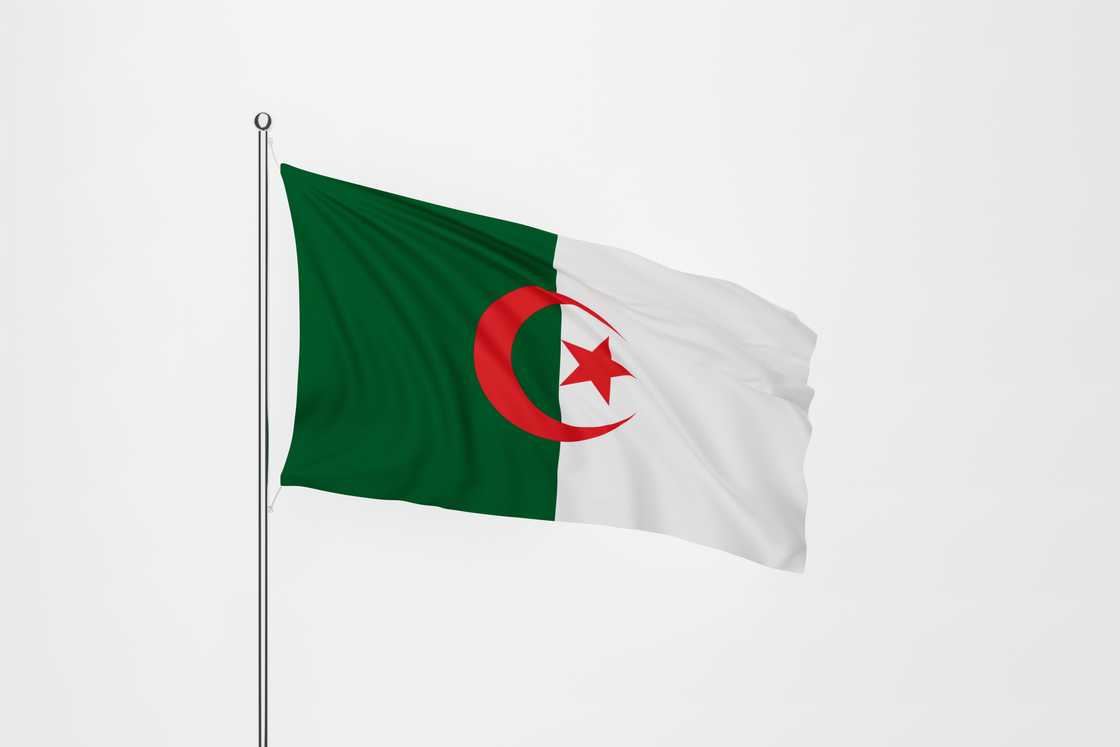
Source: Getty Images
The People's Democratic Republic of Algeria is a North African country. The country's national flag comprises two equal vertical stripes, green and white, with a red star and crescent in the centre, representing Islam as the country's dominant religion.
Symbolism
The white symbolises peace. The green, star, and crescent signify Islam, and the crimson signifies the blood of those who died fighting for freedom in Algeria.
4. Burundi

Source: Getty Images
Burundi is a landlocked country in the Great Rift Valley, amid the African Great Lakes region and East Africa. Burundi's flag features a white saltire that divides it into alternating red and green parts, with the middle of the saltire merging into a white disc with three prominent stars drawn in green.
Symbolism
The white colour of the saltire denotes peace, green symbolises the nation's expectations for future prosperity, and red reflects the nation's agony throughout its liberation war. The three stars in triangular formation represent Burundi's three ethnic groups: the Twa, Hutu, and Tutsi.
5. Hungary
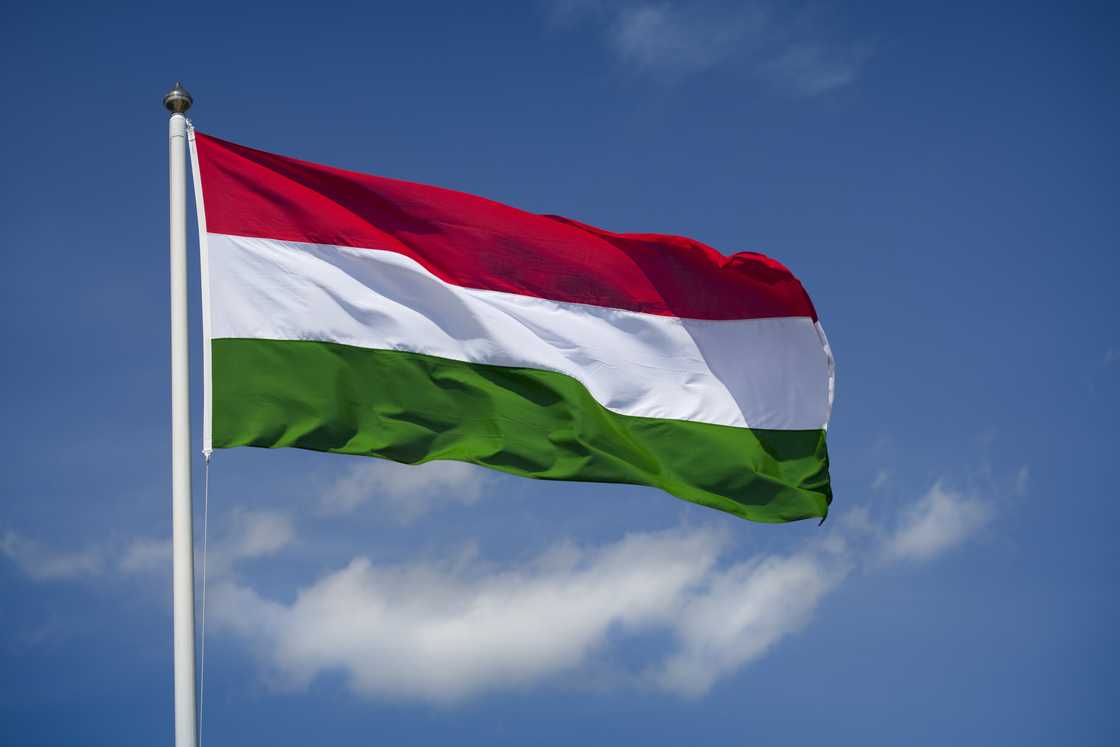
Source: Getty Images
Hungary is a landlocked nation in Central Europe. Which country's flag is red, white, and green? The Republic of Hungary's flag is a tricolour with horizontal red, white, and green stripes of equal widths.
Symbolism
The white represents Hungary's rivers, the green its mountains, and the red the blood spilt in its numerous battles.
6. Iran
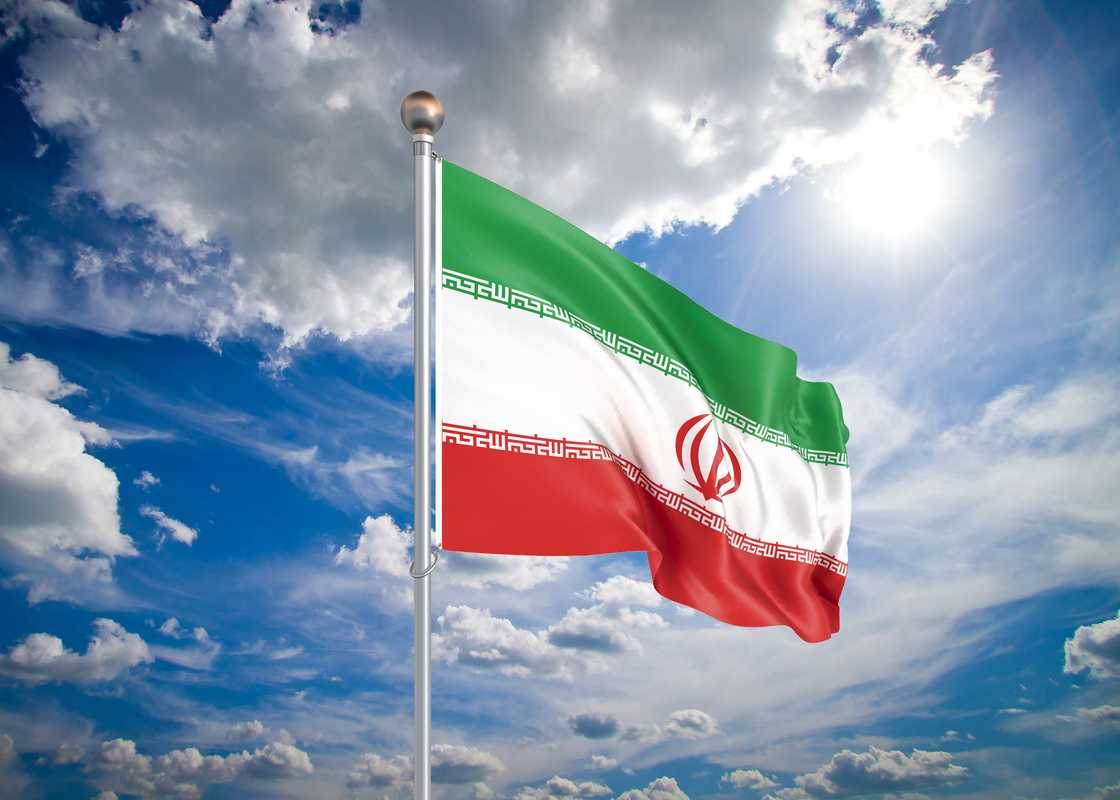
Source: Getty Images
The Islamic Republic of Iran is a Western Asian country. Its flag is a tricolour with equal horizontal green, white, and red stripes representing the Pan-Iranian colours. The national emblem is centred on the white band, and the Takbir is written in white, with 11 Kufic characters each at the top of the red band and the bottom of the green band.
Symbolism
The horizontal green, white, and red stripes represent the country's Islamic faith, peace, and courage.
7. Italy
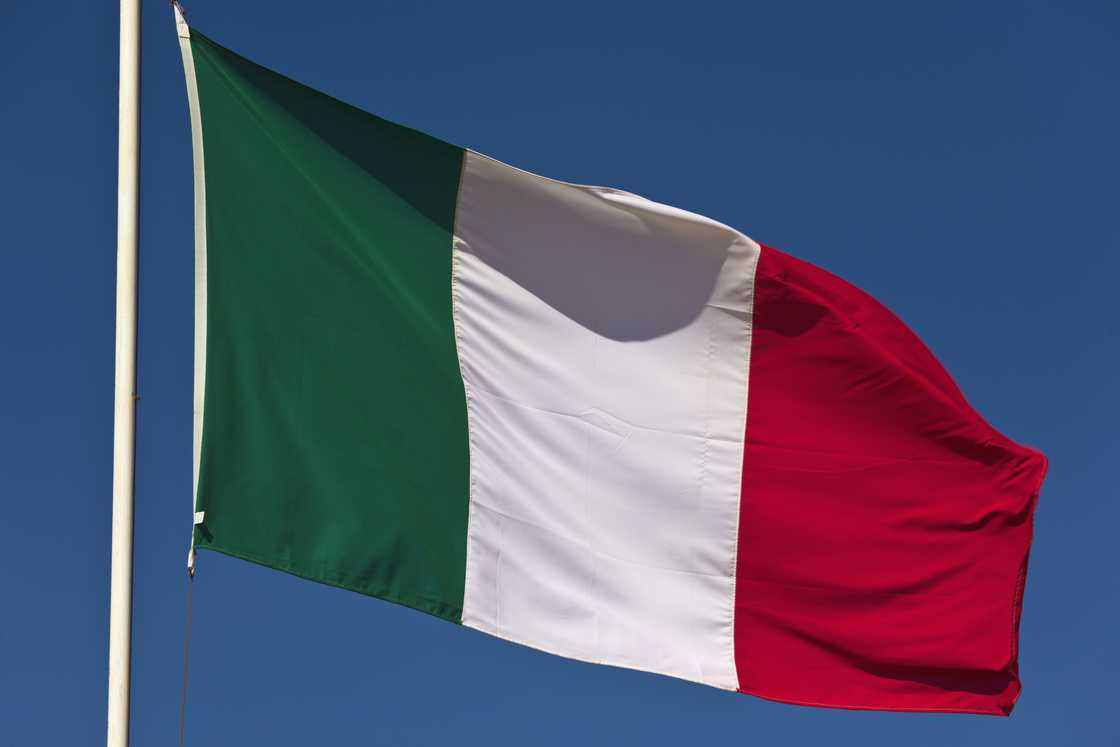
Source: Getty Images
Italy is a European country with an extensive Mediterranean coastline. The Italian national flag, often known as il Tricolore, is three-coloured and has three equal-sized vertical sections of green, white, and red, with the green on the hoist side.
Symbolism
Each colour has a meaning: green symbolises the Italian landscape and human rights like social equality and freedom. Red signifies love and the bloodshed during the Wars of Italian Independence and Unification. White represents faith and the snowy Alps.
8. Lebanon

Source: Getty Images
Lebanon is a country in West Asia's Levant area. Its national flag has two horizontal red stripes surrounding a horizontal white stripe. The white stripe is double the height of the red ones, forming a Spanish fess. The green cedar in the centre touches each red line, measuring one-third of the flag's width.
Symbolism
The colour red symbolises bloodshed, while white denotes purity and serenity. The cedar symbolises the Bible.
9. Madagascar
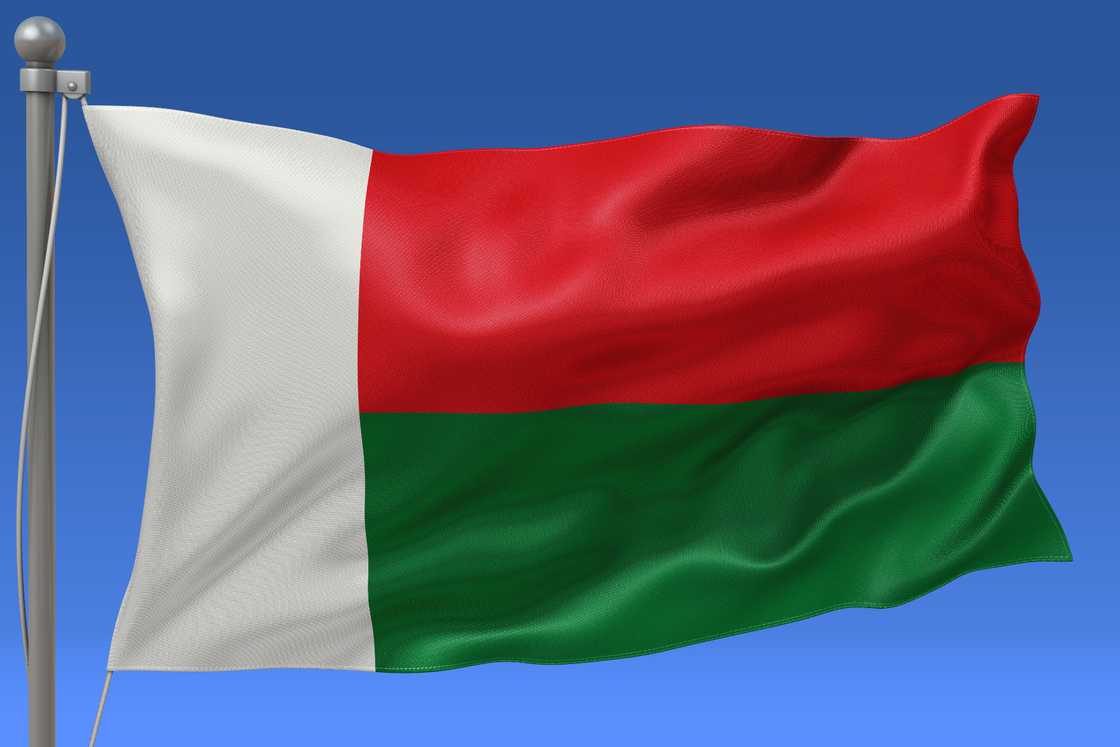
Source: Getty Images
The Republic of Madagascar is an island country that includes Madagascar and several smaller outlying islands. The flag features the conventional hues of white, red, and green with a green stripe.
Symbolism
White is considered to signify purity, red to represent sovereignty, and green to symbolise coastal regions and hope.
10. Maldives

Source: Getty Images
The Republic of Maldives, formerly the Maldive Islands, is a South Asian republic and archipelago in the Indian Ocean. Its flag is green with a crimson border. The centre features a vertical white crescent, with the closed side facing the rising side of the flag.
Symbolism
The red rectangle depicts the blood of the nation's heroes and their determination to give their last drop of blood in defence of their homeland. The green rectangle in the centre represents peace and prosperity. The white crescent moon represents the Islamic faith of the state and its authorities.
11. Mexico

Source: Getty Images
The United Mexican States is a nation in the southern region of North America. The Mexican national flag is a vertical tricolour of green, white, and red, with the national coat of arms in the centre of the white stripe.
Symbolism
The vertical green stripe symbolises independence and hope; the white signifies the Roman Catholic church and unity; and the red depicts the friendship between Europeans and Mexicans and Mexicans who struggled for freedom.
12. Oman
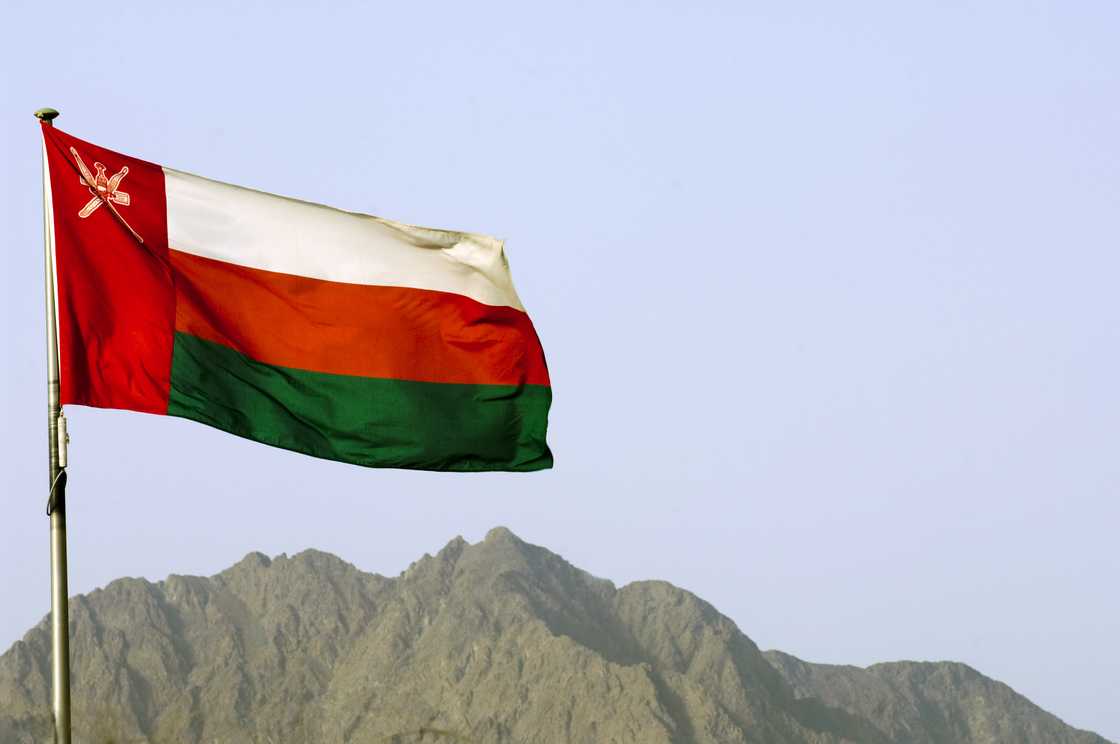
Source: Getty Images
The Sultanate of Oman is a Western Asian country. The flag is rectangular and has three horizontal stripes of white, green, and red, and a vertical red strip on the left (hoist) side that features Oman's National Emblem in white.
Symbolism
The Omani people's belief in peace is represented by the colour white. The red band comes from the previous Omani flag, which was entirely red. It represents the wars fought by Omanis to expel foreign invaders from their nation. The green band signifies the land's fertility and vegetation.
What flag is red, white, and green?
Twelve countries fly red, white, and green flags. They include Belarus, Algeria, Burundi, Bulgaria, Iran, Mexico, Hungary, Lebanon, Italy, Maldives, Madagascar, and Oman.
A national flag serves as a country's national symbol. Countries with red, white, and green in their flags include Belarus, Algeria, Burundi, Bulgaria, Iran, Mexico, Hungary, Lebanon, Italy, Maldives, Madagascar, and Oman.
Can you wear red to a wedding? Yen.com.gh published a fantastic article with tips on choosing the perfect wedding dress. A wedding ceremony is an essential occasion in someone's life. It enables them to openly confess love and make an eternal pledge to a partner in front of loved ones.
Dressing for a wedding ceremony can sometimes be difficult, especially if the venue has a dress code. Women are expected to wear formal or full-length gowns, while men must wear tuxedos. But, with constantly changing dress codes, what hues are appropriate for a wedding? Read the article to learn more.
Source: YEN.com.gh






